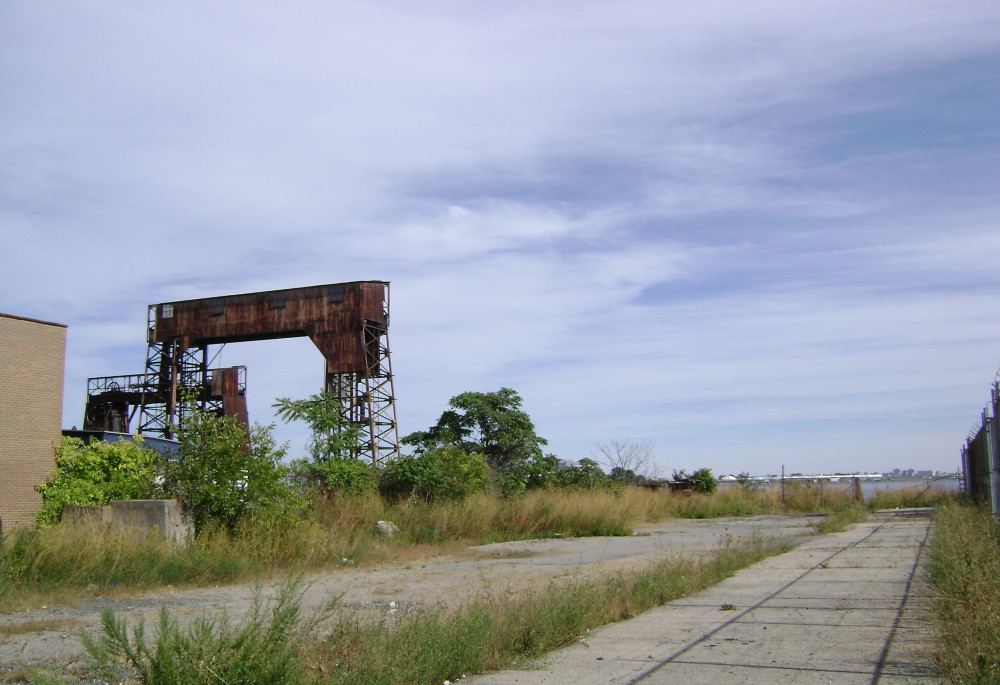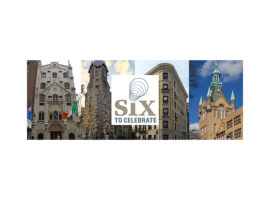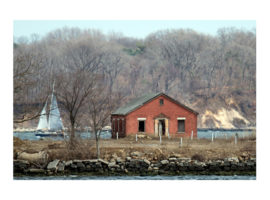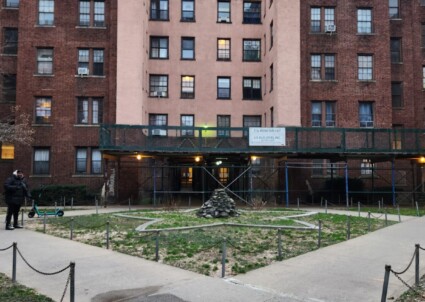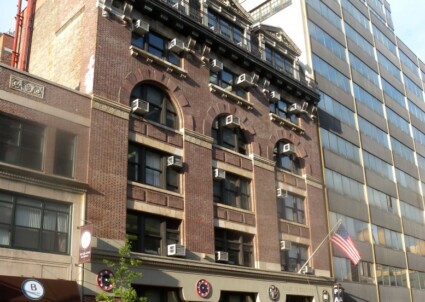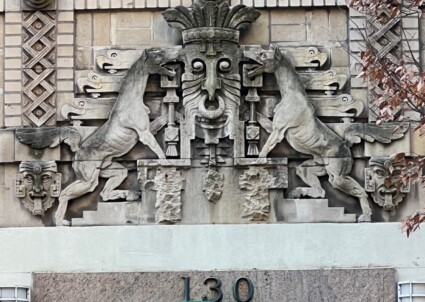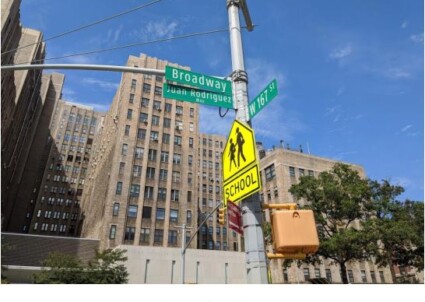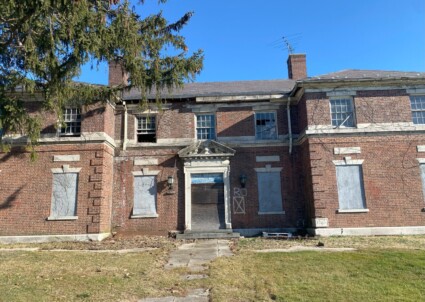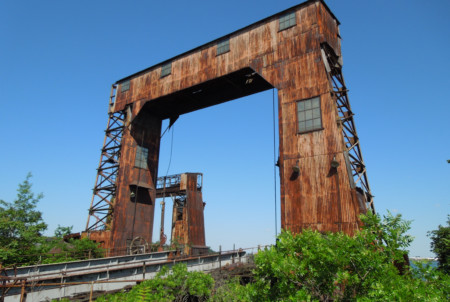Port Morris & The 134th Street Ferry Bridges, The Bronx
The Port Morris section of The Bronx was once part of Morrisania, which was established as a seaport in 1842 by Gouverneur Morris, Jr., son of United States founding father Gouverneur Morris. In the 1850s, the area’s waterfront developed as an industrial center with tenants such as stone works and furniture and piano factories. By the end of the 19th century, Port Morris was the capital of piano manufacturing in the United States. These enterprises took advantage of the area’s affordable land and rail access to markets and raw materials. Inland of the industrial waterfront, developers constructed apartment buildings and commercial blocks to serve factory employees. Today the neighborhood has retained this layout. The Bruckner Expressway forms a boundary between the waterfront and inland zones, which, for the pedestrian, gives a clear sense of this character delineation, as well.
In 1906, the New York, New Haven and Hartford Railroad yards were constructed on the Bronx Kills. Improved transportation further cemented Port Morris’ status as an industrial hub. In 1916, New York City passed its first zoning law, which, among other things, regulated land use for the first time. Port Morris, Mott Haven and West Farms were zoned almost exclusively for manufacturing, while the majority of The Bronx was zoned residential to serve as a suburb of Manhattan. Port Morris experienced a steady decline in prosperity beginning in the 1940s. Arson destroyed many structures in the area in the 1970s, but by the end of the 20th century, industry began to return. In 2006 the city designated the area as an Industrial Business Zone, with business incentives to encourage enterprises to remain in the area.
Around the turn of the 20th century, Port Morris was part of a network of industrial waterfront districts in the southern Bronx, northern Queens and northern Manhattan. As there were not yet bridges connecting these parts of the city, ferries were the primary means of crossing the waterways. The enterprises that made up this network were largely owned and operated by German immigrants, including the owner of the New York and College Point Ferry Company, George Ehret, Sr. Ehret was the wealthy founder of the Hell Gate Brewery, one of the largest breweries in the country at that time, at 92nd Street and 2nd Avenue in Manhattan. His ferry service transported passengers and goods between the factories in The Bronx, the produce market in Harlem, the brewery on 92nd Street, the largely German residential neighborhood of Yorkville in Manhattan, the largely German industrial neighborhood of College Point in northern Queens, and the German recreational enclave of North Beach, also in northern Queens.
One of the ferry depots along this network was at East 134th Street in The Bronx, for which a pair of large ferry bridges or “gantries” was constructed in 1948. The ferry bridges were discontinued in the 1960s and have been left to deteriorate. Their rusty silhouettes grace the waterfront and have become the subject of a vigorous preservation campaign by the Friends of Brook Park, a local advocacy and education group who wishes to turn the site into a much-needed park. The ferry bridges are the final stop on this self-guided tour of Port Morris.
